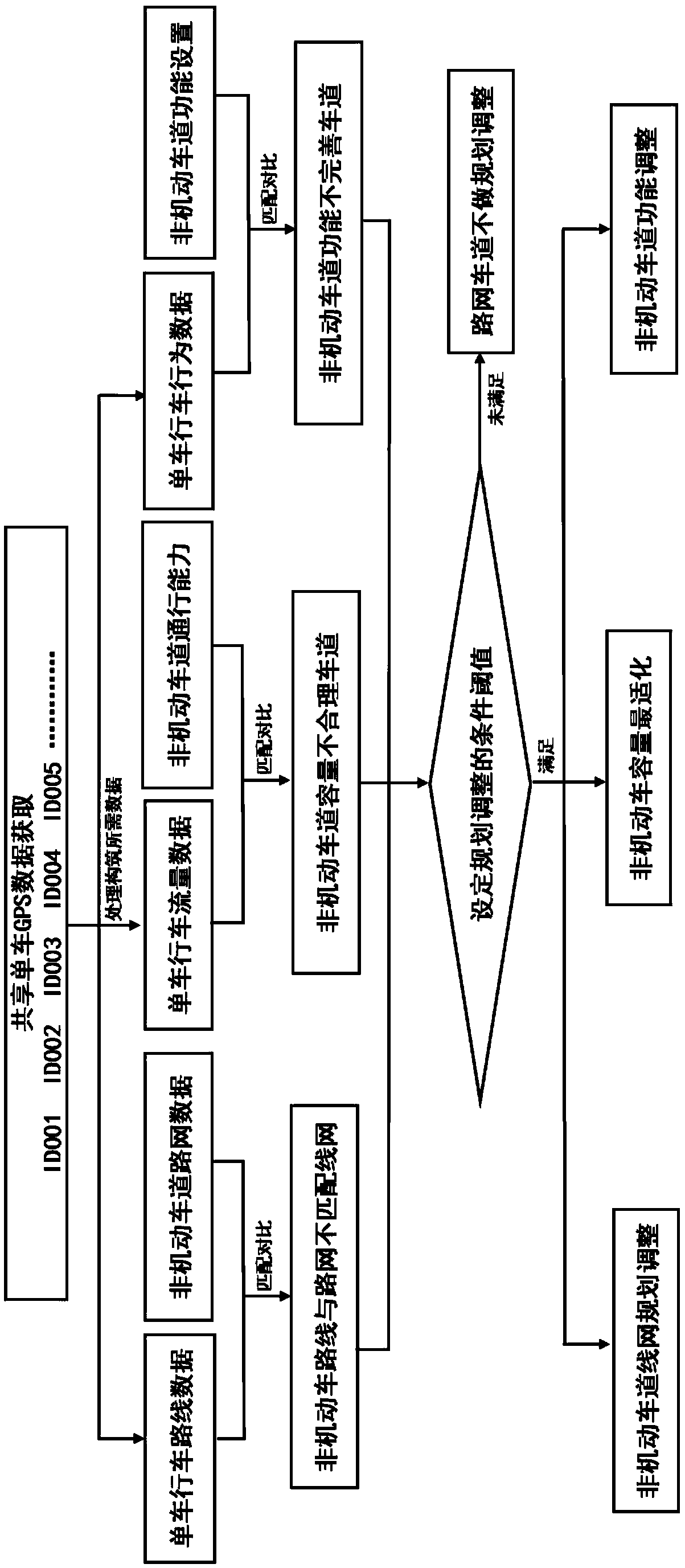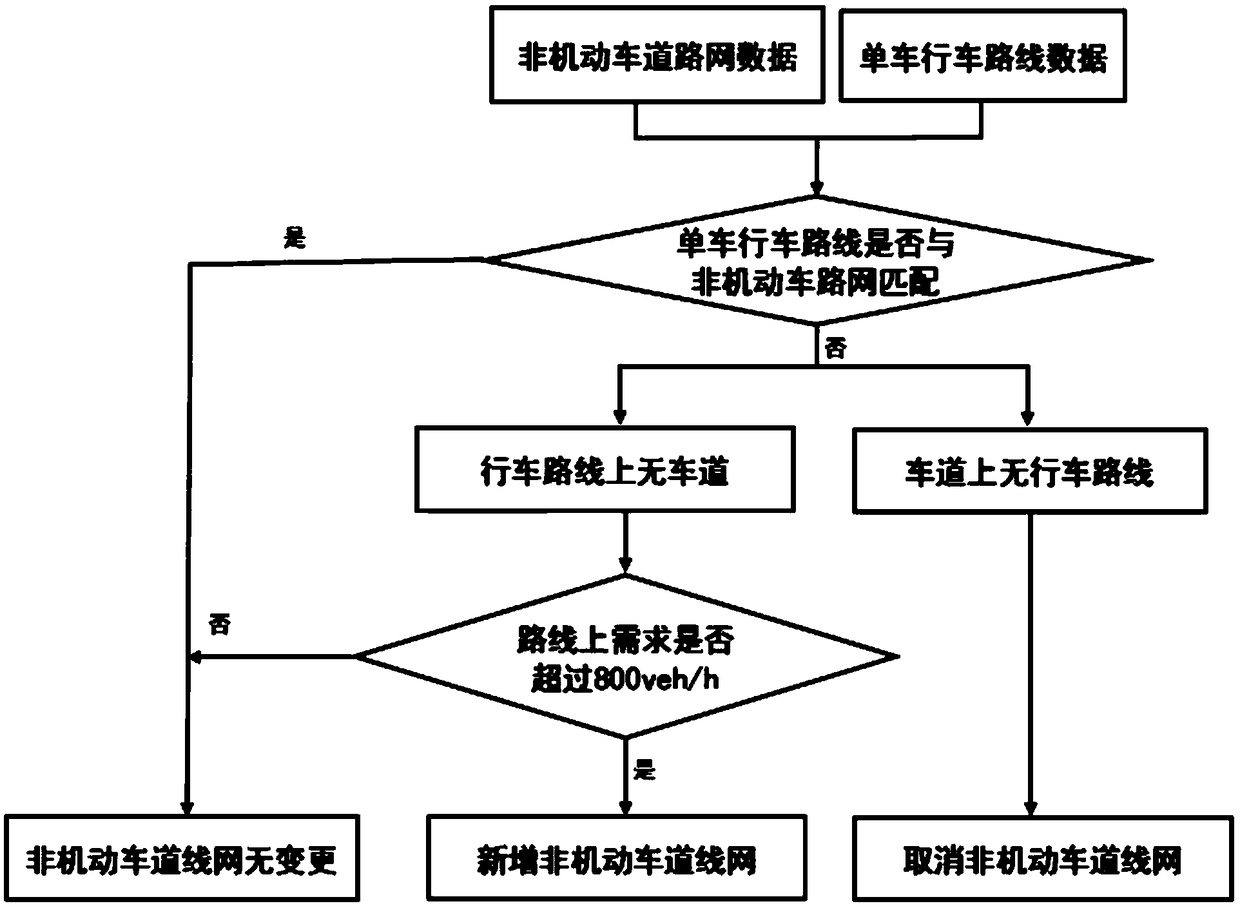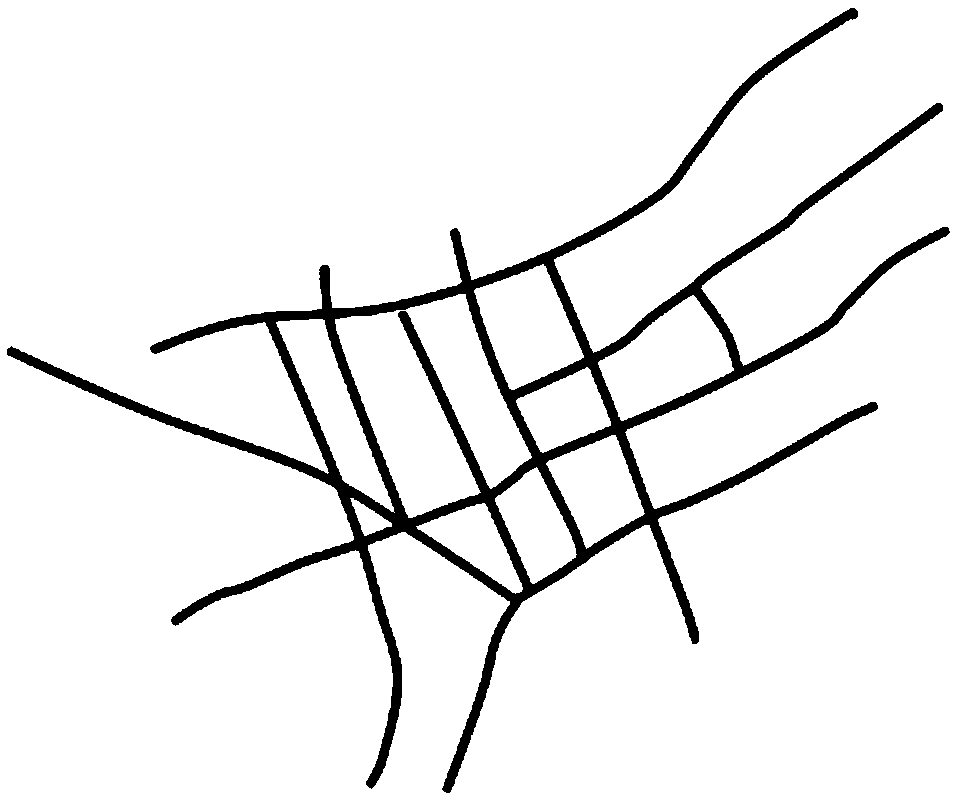Non-motor vehicle lane planning method based on non-motor vehicle route data
A non-motor vehicle lane and non-motor vehicle technology, which is applied in the field of non-motor vehicle lane planning based on non-motor vehicle route data, can solve the problem of lack of grasping means, lack of data basis, and lack of targeted data support for actual driving conditions of non-motor vehicles. and other issues, to achieve the effect of strong practicability, strong pertinence, rapid and flexible data update
- Summary
- Abstract
- Description
- Claims
- Application Information
AI Technical Summary
Problems solved by technology
Method used
Image
Examples
Embodiment 1
[0051] Such as figure 1 As shown, the non-motor vehicle lane planning method based on non-motor vehicle route data; the steps are as follows:
[0052] a. Obtain the GPS data and vehicle ID data of all bicycles from the shared bicycle platform, and construct the bicycle driving route data, bicycle traffic data and bicycle driving behavior data of each bicycle;
[0053] b. Matching and comparing the bicycle route data with the non-motor vehicle road network data to obtain a non-motor vehicle road network that does not match the non-motor vehicle route;
[0054] Matching and comparing the single-vehicle traffic flow data with the traffic capacity of the non-motor vehicle lane, and obtaining a lane with an unreasonable capacity of the non-motor vehicle lane;
[0055] Said matching and comparing the single-vehicle driving behavior data with the non-motor vehicle lane function settings, and obtaining the non-motor vehicle lane function imperfect lane;
[0056]c. Set the conditiona...
Embodiment 2
[0061] Such as Figure 2 to Figure 4 As shown, the comparative analysis of non-motor vehicle road network paths: By comparing the planned or current planned non-motor vehicle road network and the difference between the network formed by bicycle routes, the non-motor vehicle lane network planning is adjusted. The traffic capacity of a non-motorized lane is generally 800-1200veh / h, then it is assumed that the non-motorized vehicle road network does not match the route and the demand for non-motorized vehicles on the road section exceeds 80% of the traffic capacity of a non-motorized lane (ie 800veh / h) The plan of adding non-motorized lanes may be considered.
Embodiment 3
[0063] Such as Figure 5 As shown, non-motorized lane capacity optimization: By comparing the matching degree of actual flow with non-motorized lane capacity and the behavioral demands of non-motorized vehicles, the current or planned non-motorized lane width and related functions are adjusted and optimized. The design of non-motor vehicle lanes should adopt the three-level service level standard, and the load degree should be controlled between 0.70 and 0.85, and those exceeding or falling below this range should be adjusted proportionally. For example, when the load degree is 0.6, it is 0.1 smaller than the minimum value of the set range of 0.7, and the width of a lane is reduced by 0.1 (that is, 0.1m). Such as Figure 11 , Figure 12 , Figure 13 As shown, it can also be adjusted in conjunction with non-motor vehicle separation facilities (addition of non-motor vehicle separation facilities can increase the traffic capacity of non-motorized lanes by 10% to 20%).
[0064...
PUM
 Login to View More
Login to View More Abstract
Description
Claims
Application Information
 Login to View More
Login to View More - R&D
- Intellectual Property
- Life Sciences
- Materials
- Tech Scout
- Unparalleled Data Quality
- Higher Quality Content
- 60% Fewer Hallucinations
Browse by: Latest US Patents, China's latest patents, Technical Efficacy Thesaurus, Application Domain, Technology Topic, Popular Technical Reports.
© 2025 PatSnap. All rights reserved.Legal|Privacy policy|Modern Slavery Act Transparency Statement|Sitemap|About US| Contact US: help@patsnap.com



